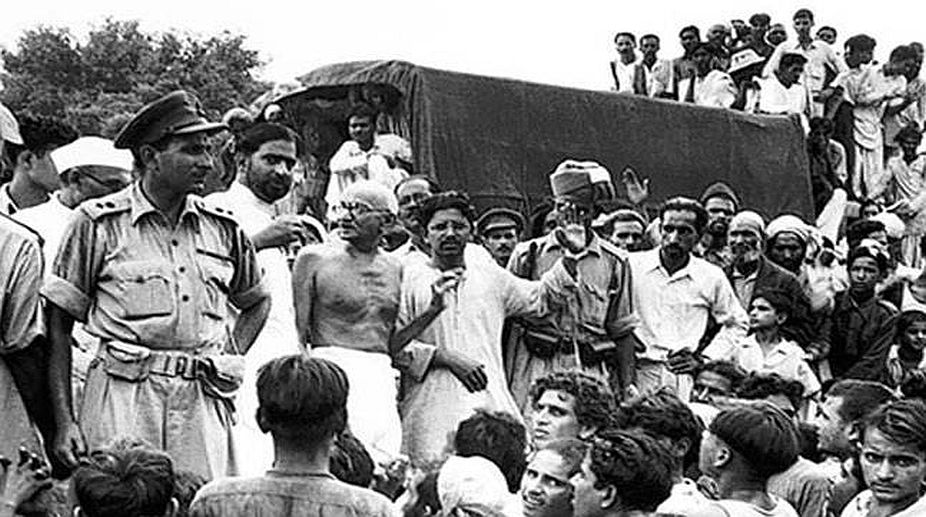Democracy Dismantled
The sentencing of 45 pro-democracy campaigners in Hong Kong under its controversial National Security Law signifies a turning point in the former British colony’s political and legal history.

Champaran Satyagraha (PHOTO: TWITTER)
Champaran Satyagraha in 1917 was Mohandas Karamchand Gandhi’s first experiment with civil disobedience in India, by politically activating peasants against opium-yielding poppy and indigo cultivation by the Colonial administration in eastern Bihar, for Opium export to China. Another iniquity was the “teen kathia” taxation, requiring a third of grain harvests to be yielded up to the District Collectors for three years.
Commemorating the event in collaboration with the Gandhi Peace Foundation and The India International Centre in New Delhi on 15 April, historians Professor Aparna Basu of Delhi University, Professor Mridula Mukherjee of Jawaharlal Nehru University and legal luminary Anil Nauriya, recalled for the “now generation” the first non-violent struggle to assert the legitimacy of truth against unjust laws.
Ruthless suppression
Advertisement
Instead of food crops necessary for their survival, the British East India Company ~ and later the British India government ~ forced tens of thousands of landless serfs, indentured labourers and poor farmers in Bengal and Bihar, to grow Indigo plants.
Suppressed by the ruthless bamboo staff bearing lathiyals (militias) of the landlords (mostly British), farmers were given measly compensation, leaving them in extreme poverty. In the face of a devastating famine, the Colonial administration levied the harsh “teen kathia” tax, which they insisted on increasing.
Without food and money, the situation was growing progressively unlivable. The peasants in Champaran revolted against conditions in Indigo plantations in 1914 at Pipra and in 1916 at Turkaulia. An Indigo cultivator, Raj Kumar Shukla followed Gandhi around in his travels and apprised him of the ground realities.
Without studying the problem, he would not want to get into it. So Porbandar-born Gandhi, attired in customary knee length Kathiawari white dhoti and chadder, arrived in Champaran on 10 April, 1917, with eminent lawyers of the time, Braj Kishore Prasad, Rajendra Prasad, Anugrah Narayan Sinha and educationist Acharya Jivatram Bhagwandas Kripalani.
Along the banks of the Gandak River, the colonial administration operated 60 factories and had 46 out-works to process Poppy to produce Opium.
The second civil disobedience movement inspired by Gandhi in 1918 was in Gujarat’s Kheda district, where floods and famine hit peasantry was seeking relief from taxes. But the word‘Satyagraha’ was used for the first time during the agitation against February1919 Rowlett Acts that allowed certain political cases to be tried without juries and internment of suspects without trial. Gandhi’s mass movement led to the Jallianwala bagh massacre of April 1919 in Amritsar. The Acts were never actually implemented.
Subsequently, he led the unsuccessful non-co-operation movement 1920-22 to induce the British to grant self-government (swaraj) to India. This large scale agitation arose from the widespread outcry over killing hundreds assembled for a meeting at Jallianwala bagh and indignation at the government’s failure to take punitive action against General Reginald Edward Harry Dwyer, who ordered the firing.
Gandhi showed people through the Champaran civil disobedience, what a peaceful protest could achieve. Civil disobedience in Champaran was the precursor to the “non-cooperation” movement, the 1930 Salt Satyagraha in Dandi against imposition of special taxes on Indian salt to facilitate its import and the Quit India movement of August 1942. Satyagraha changed Mohandas Karamchand Gandhi to “Mahatma Gandhi” and added a new vigour to the freedom movement.
Advertisement